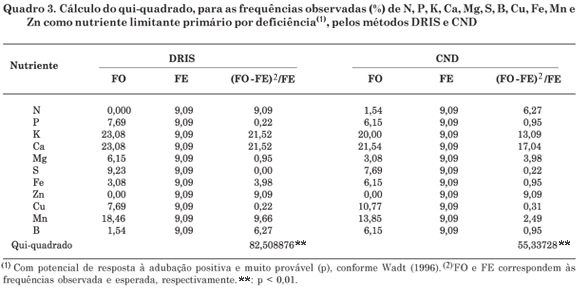Among the different methods of assessing the nutritional status of plants, DRIS and CND have the main purpose of ranking the limiting nutrients. This study aimed to develop DRIS and CND norms and compare the diagnoses of these methods in evaluations of cotton cash crops in the region of São Desidério, state of Bahia, Brazil. The database consisted of the total nutrient content of 65 whole leaf samples and seed cotton yield of plots with an average size of 120 ha. To adjust the method the population was divided into two production classes, one with yield above and the other below 4,250 kg ha-1. The best response in terms of yield was observed for potassium, calcium and manganese by DRIS as well as CND. In the assessment of the frequency of concordant diagnoses for the potential of positive response to fertilization, it was found that N (70.8 %) was the nutrient with best agreement between the two methods (DRIS and CND) whereas DRIS diagnosed greater relative deficiency for N than CND. For the other nutrients, the frequency of concordant diagnoses based on the potential response to fertilization was from around 73.8 % for Zn to 87.7 % for P. With the adjustment of the methods DRIS and CND, the diagnoses of the nutritional status of cotton in western Bahia were similar.
Mineral nutrition; Gossypium hirsutum; leaf analysis; nutritional balance













